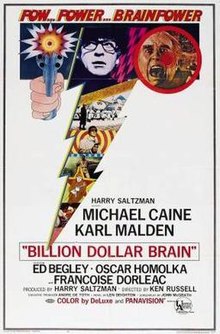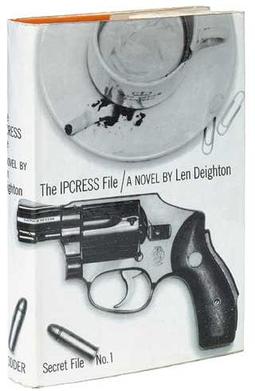
The IPCRESS File is Len Deighton's first spy novel, published in 1962. The story involves Cold War brainwashing, includes scenes in Lebanon and on an atoll for a United States atomic weapon test, as well as information about Joe One, the Soviet Union's first atomic bomb. The story was made into a film in 1965 produced by Harry Saltzman, directed by Sidney J. Furie and starring Michael Caine; and a 2022 TV series, starring Joe Cole, Lucy Boynton and Tom Hollander.
Leonard Cyril Deighton is a British author. His publications have included cookery books and works on history, but he is best known for his spy novels.
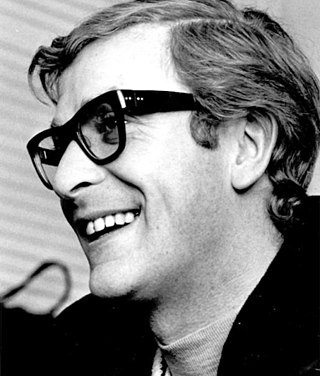
Harry Palmer is the name given to the anti-hero protagonist of several films based on spy novels written by Len Deighton, in which the main character is an unnamed intelligence officer. For convenience, the novels are also often referred to as the "Harry Palmer" novels.
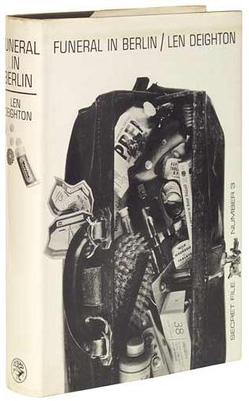
Funeral in Berlin is a 1964 spy novel by Len Deighton set between Saturday 5 October and Sunday 10 November 1963. It was the third of Deighton's novels about an unnamed British agent. It was preceded by The IPCRESS File (1962) and Horse Under Water (1963), and followed by Billion-Dollar Brain (1966).

Billion-Dollar Brain is a 1966 Cold War spy novel by Len Deighton. It was the fourth to feature an unnamed secret agent working for the British WOOC(P) intelligence agency. It follows The IPCRESS File (1962), Horse Under Water (1963), and Funeral in Berlin (1964). As in most of Deighton's novels, the plot of Billion Dollar Brain (1967) is intricate, with many dead ends.

Sir Michael Caine is an English retired actor. Known for his distinctive Cockney accent, he has appeared in more than 160 films over a career spanning eight decades and is considered a British film icon. He has received numerous awards including two Academy Awards, a BAFTA Award, three Golden Globe Awards, and a Screen Actors Guild Award. As of 2017, the films in which Caine has appeared have grossed over $7.8 billion worldwide. Caine is one of only five male actors to be nominated for an Academy Award for acting in five different decades. In 2000, he received a BAFTA Fellowship and was knighted by Queen Elizabeth II.
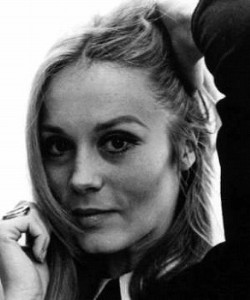
Françoise Paulette Louise Dorléac was a French actress. She was the elder sister of Catherine Deneuve, with whom she starred in the 1967 musical, The Young Girls of Rochefort. Her other films include Philippe de Broca's movie That Man from Rio, François Truffaut's The Soft Skin, Roman Polanski's Cul-de-sac, and Val Guest's Where the Spies Are.

Horse Under Water (1963) is the second of several Len Deighton spy novels featuring an unnamed British intelligence officer. It was preceded by The IPCRESS File and followed by Funeral in Berlin.
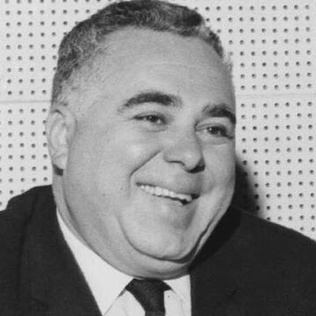
Herschel "Harry" Saltzman was a Canadian theatre and film producer. He is best remembered for co-producing the first nine of the James Bond film series with Albert R. Broccoli. He lived most of his life in Denham, Buckinghamshire, England.
Susan Margery Jeaffreson Lloyd was an English model and actress, with numerous film and television credits. She may be best known for her long-running role as Barbara Hunter in the British soap opera Crossroads and Cordelia Winfield in the ITC series The Baron.

Otto Heller, B.S.C. was a Czech cinematographer long resident in the United Kingdom. He worked on more than 250 films, including Richard III (1955), The Ladykillers (1955) and Peeping Tom (1960).
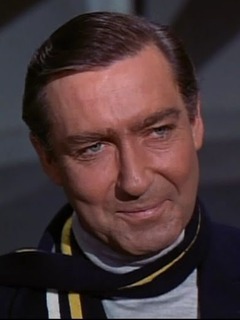
Guy Doleman was a New Zealand born actor, active in Australia, Britain and the United States. He is possibly best remembered for being the first actor to play Number Two in the classic cult series The Prisoner.

Play Dirty is a 1969 British war film starring Michael Caine, Nigel Davenport, Nigel Green and Harry Andrews. It was director Andre de Toth's last film, based on a screenplay by Melvyn Bragg and Lotte Colin.
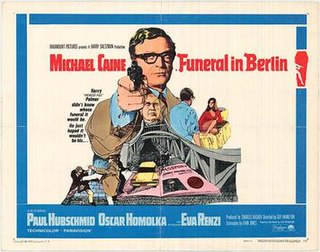
Funeral in Berlin is a 1966 British spy film directed by Guy Hamilton and based on the 1964 novel of the same name by Len Deighton. It is the second of three 1960s films starring Michael Caine as the character Harry Palmer that followed the characters from the initial film, The Ipcress File (1965). The third film was Billion Dollar Brain (1967).

The Ipcress File is a 1965 British spy film directed by Sidney J. Furie and starring Michael Caine. The screenplay, by Bill Canaway and James Doran, was based on Len Deighton's novel The IPCRESS File (1962). It received a BAFTA award for the Best British film released in 1965. In 1999, it was included at number 59 on the BFI list of the 100 best British films of the 20th century.

Michael Caine is an English actor who has appeared in over 130 films and has had multiple television appearances. Caine's acting career began in the 1950s, when he was cast in many small, often uncredited roles in British films. Caine gained recognition as one of the most famous actors of the 1960s through his breakthrough role in the film Zulu (1964). He then portrayed spy Harry Palmer in the films The Ipcress File (1965), Funeral in Berlin (1966) and Billion Dollar Brain (1967). He also had starring roles in The Italian Job and Battle of Britain. His role in Sleuth (1972) led him to an Academy Award for Best Actor nomination. Caine has won a Best Supporting Actor Oscar for the films Hannah and Her Sisters (1986) and The Cider House Rules (1999). More recently, Caine has gained a new following through his collaborations with British-American filmmaker Christopher Nolan in The Dark Knight Trilogy films, as well as The Prestige (2006), Inception (2010), Interstellar (2014), Dunkirk (2017) and Tenet (2020). Caine officially retired from acting in October 2023.

Bullet to Beijing is a 1995 made-for-television film that continues the adventures of the fictional spy Harry Palmer, who appeared in the 1960s films The Ipcress File, Funeral in Berlin and Billion Dollar Brain, based on books by author Len Deighton. Though an alternative title is Len Deighton's Bullet to Beijing, Deighton was not associated with the film.

Colonel H. L. Ross is a fictional character from the series of novels by Len Deighton variously described as the "Secret File" or "Unnamed hero" novels. His first names are not revealed.
Len Deighton is an English author known for his novels, works of military history, screenplays and cookery writing. He had a varied career, including as a pastry cook, waiter, co-editor of a magazine, teacher and air steward before writing his first novel in 1962: The IPCRESS File. He continued to produce what his biographer John Reilly considers "stylish, witty, well-crafted novels" in spy fiction, including three trilogies and a prequel featuring Bernard Samson.

The Ipcress File is a British cold war spy thriller television series loosely based on the 1962 novel The IPCRESS File by Len Deighton. Written by John Hodge and directed by James Watkins, it stars Joe Cole, Lucy Boynton and Tom Hollander. It was first broadcast at 9pm from Sunday 6 March to 10 April 2022 on ITV. The entire series was available for streaming, with commercials, on ITV Hub after episode 1 was broadcast. Within a week the full series was also available, commercial-free, on BritBox in the UK.
